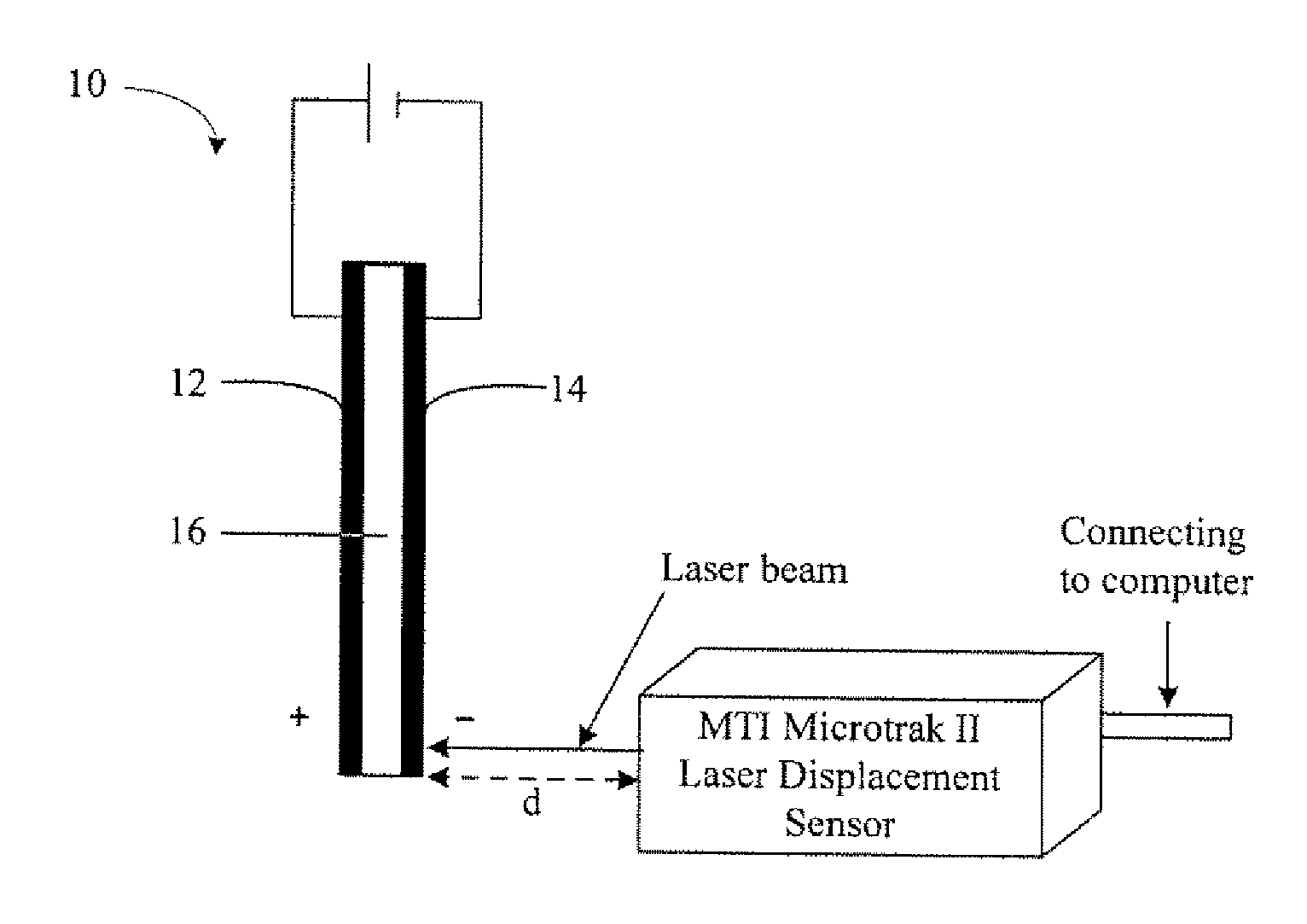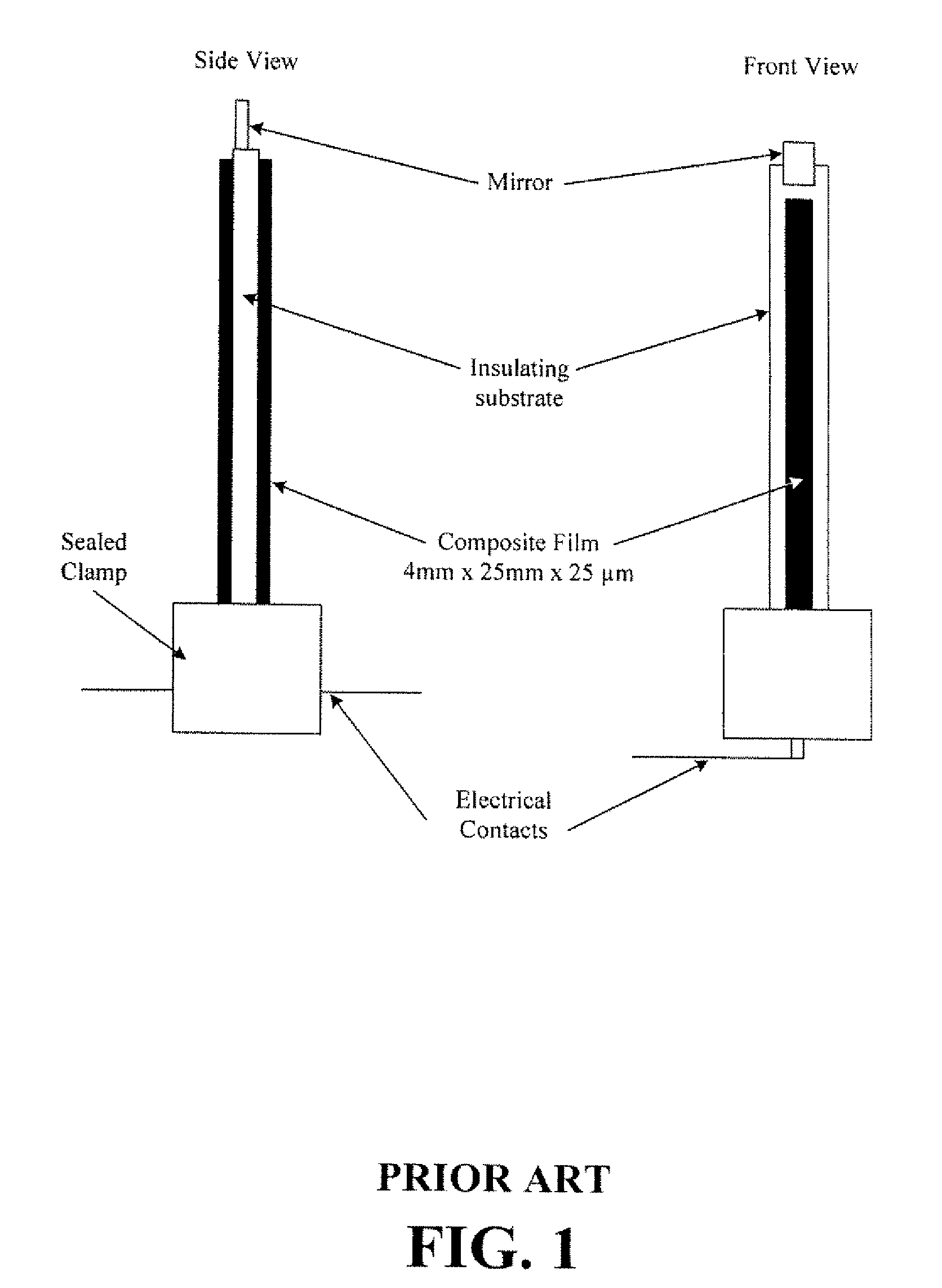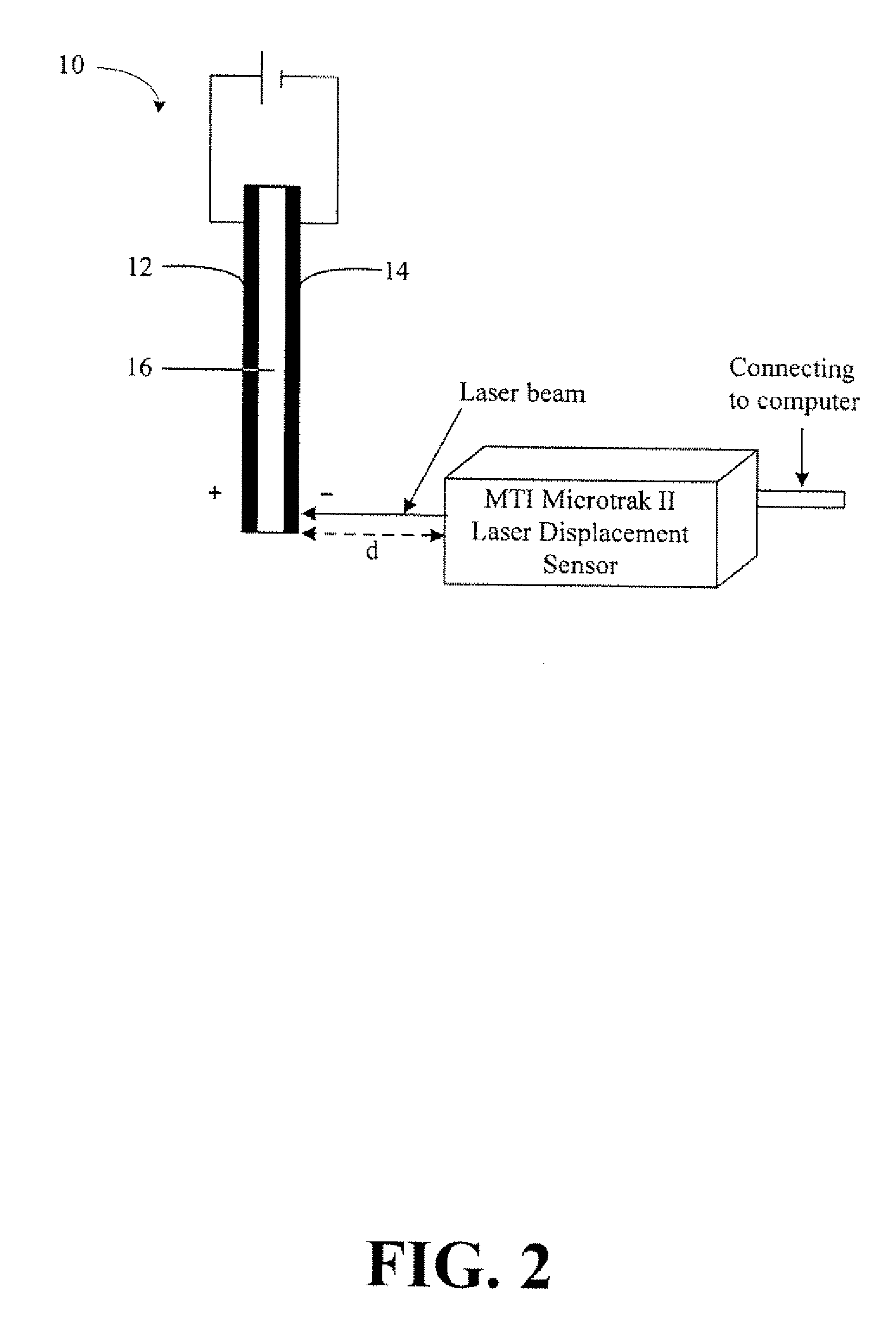Actuator Device Including Nanoscale Fiber Films
a technology of nanofiber films and actuators, which is applied in the direction of layered products, transportation and packaging, chemistry apparatuses and processes, etc., can solve the problems of low operation voltage and large deformation of actuators, eap actuators, and low mechanical strength
- Summary
- Abstract
- Description
- Claims
- Application Information
AI Technical Summary
Problems solved by technology
Method used
Image
Examples
example 1
Actuators Comprising Two Layers of Randomly Dispersed SWNT Films and NAFION®
[0058]Embodiments of actuators were made comprising two layers of randomly dispersed SWNT films and NAFION® solid polymer electrolyte. The nanotubes used were purified SWNT from Carbon Nanotechnology Inc (CNI) (Houston, Tex.). The buckypaper was fabricated by multiple steps of dispersion of 40 mg / L of SWNT with Triton X-100 surfactant (in an amount ten times the SWNT weight) in a liquid suspension and filtration of the suspension. About 12 to 15 L of the suspension was filtered to make one 8 inches×8 inches SWNT buckypaper using a Millipore 0.45 micron filter membrane. After fabrication of the buckypapers, a few drops of NAFION® solution (NAFION® NRE-212) were applied on top of the two randomly oriented SWNT buckypapers (15 microns thick) for better bonding between the buckypapers and the polymer electrolyte. After the two NAFION®-impregnated buckypapers were dried, they were placed on both sides of a NAFION...
example 2
Actuator with NAFION® / Long MWNTs Composite
[0063]Composite actuators made of NAFION® / nanotube sheets, or buckypapers (15˜30 μm thickness), were made and operated in the open air as high strength electromechanical actuation devices. The goal was to achieve efficient actuation under ambient and open air conditions with low driven voltage through utilizing a buckypaper / NAFION® / buckypaper sandwich composite structure. The nanotube sheets were composed of millimeter-long nanotubes. NAFION® was used as a solid electrolyte to form a charge in the two layers of buckypaper to facilitate C—C bond actuation. Briefly, the buckypaper / NAFION® / buckypaper sandwich composite actuator was made by hot pressing buckypaper onto both sides of a NAFION® membrane. The high conductivity, large surface area, and excellent mechanical properties of the actuator materials were used to enhance actuation performance.
Fabrication of Composite Actuator
[0064]NAFION® NRE-212 membrane was supplied by Du Pont. Thin nanot...
PUM
| Property | Measurement | Unit |
|---|---|---|
| length | aaaaa | aaaaa |
| temperature | aaaaa | aaaaa |
| conductivity | aaaaa | aaaaa |
Abstract
Description
Claims
Application Information
 Login to View More
Login to View More - R&D
- Intellectual Property
- Life Sciences
- Materials
- Tech Scout
- Unparalleled Data Quality
- Higher Quality Content
- 60% Fewer Hallucinations
Browse by: Latest US Patents, China's latest patents, Technical Efficacy Thesaurus, Application Domain, Technology Topic, Popular Technical Reports.
© 2025 PatSnap. All rights reserved.Legal|Privacy policy|Modern Slavery Act Transparency Statement|Sitemap|About US| Contact US: help@patsnap.com



